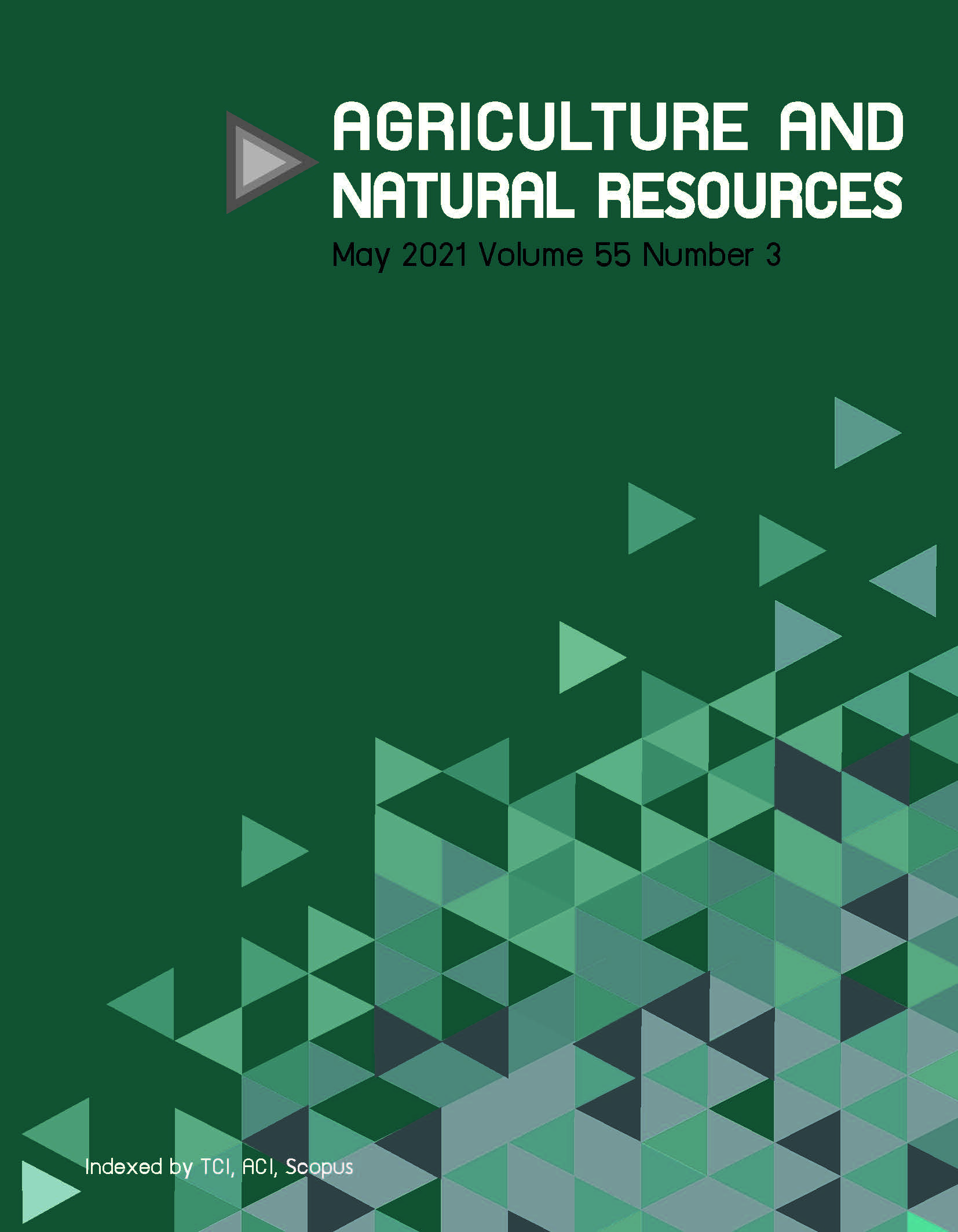Efficient mini-prep RNA extraction from Dendrobium floral tissues rich in polysaccharides for validation of reference genes during flower development
Keywords:
Dendrobium, Polysaccharide-rich tissue, Real-time polymerase chain reaction (PCR), Reference gene, RNA extractionAbstract
RNA extraction from polysaccharide-rich Dendrobium Sonia ‘Bom’ flowers always yields low RNA quantity and quality. Four different standard extraction methods were compared to investigate the most effective RNA extraction method suitable for validation of reference genes during flower development. Quantity analysis of total RNA extracted from petal tissues of flowers at three developmental stages using LiCl-based, hexadecyltrimethylammonium bromide-based, spin column-based and RibozolTM Reagent-based methods showed that the RNA yield was dependent on the flower developmental stage and the extraction method. The LiCl-based extraction method gave the highest total RNA yield from fully opened flowers. Different LiCl concentrations for the total RNA precipitation step in this method also affected the total RNA yield, which gradually increased from the standard 4 M LiCl and reached a maximum yield at 10 M of 8.29 μg/100 mg fresh weight. However, the addition of 12 M LiCl significantly reduced the total RNA yield compared to adding 10 M LiCl. The ratios of absorbance of 260 nm to 280 nm for protein contamination and of 260 nm to 230 nm for polysaccharide contamination were 1.97–2.13 and 1.5–2.14, respectively. Four different software packages were used to validate the suitable reference genes for gene expression analysis during flower development based on eight candidate genes of Dendrobium: Actin (ACT), Cyclophilin (CYP), Eukaryotic initiation factor (EIF), Glyceraldehyde 3-phosphate dehydrogenase (GAPDH), 18S ribosomal RNA (18S), Elongation factor 1 alpha (EF1α), Gamma-secretase subunit APH1-like (APH1L) and Cyclic nucleotide-gated cation channel protein (SAND). ACT was the most stable reference gene, followed by EF1α, CYP, EIF, SAND, 18S, GAPDH and APH1L, respectively.
Downloads
Published
How to Cite
Issue
Section
License

This work is licensed under a Creative Commons Attribution-NonCommercial-NoDerivatives 4.0 International License.
online 2452-316X print 2468-1458/Copyright © 2022. This is an open access article under the CC BY-NC-ND license (http://creativecommons.org/licenses/by-nc-nd/4.0/),
production and hosting by Kasetsart University of Research and Development Institute on behalf of Kasetsart University.







